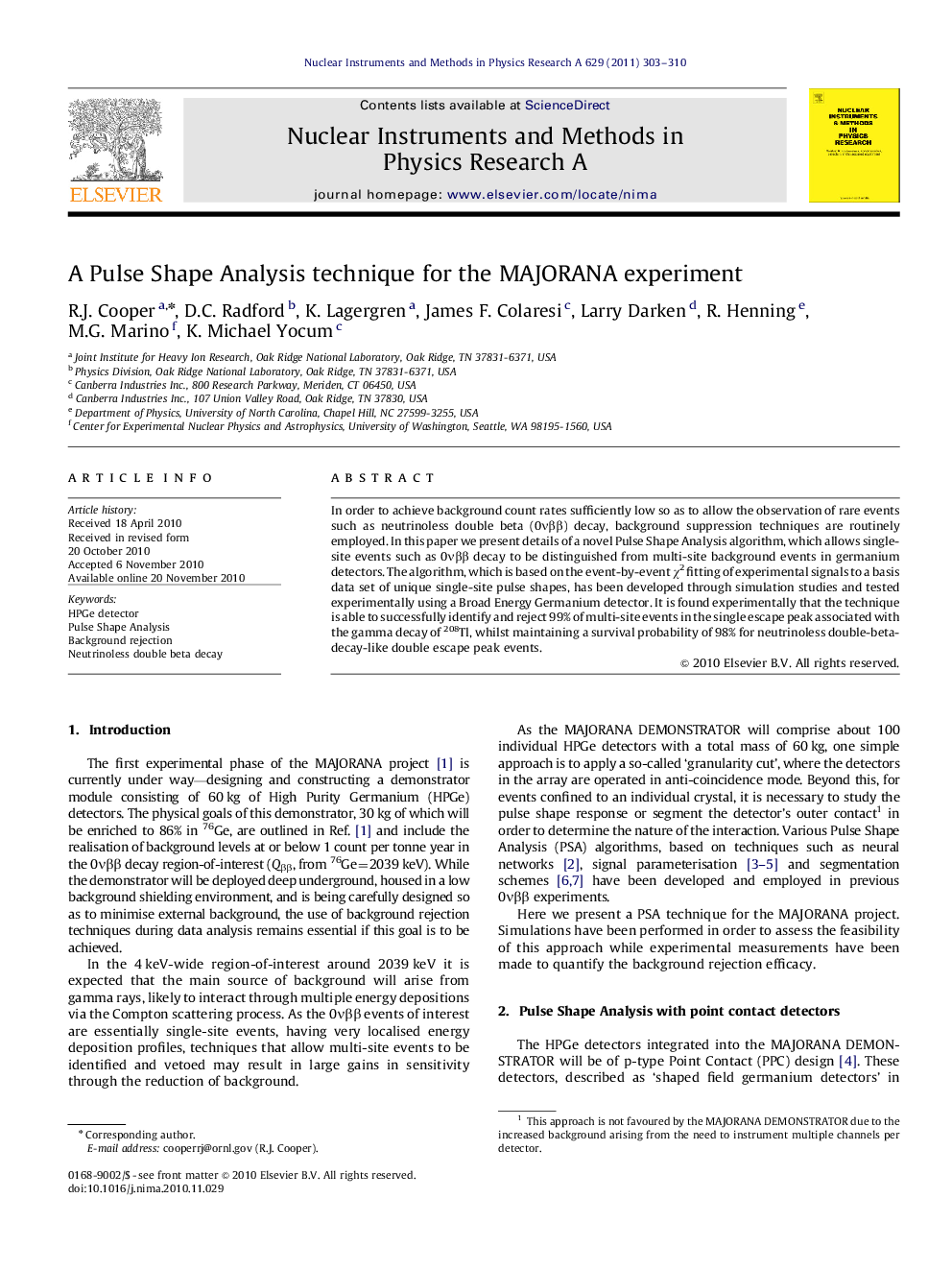| Article ID | Journal | Published Year | Pages | File Type |
|---|---|---|---|---|
| 1826538 | Nuclear Instruments and Methods in Physics Research Section A: Accelerators, Spectrometers, Detectors and Associated Equipment | 2011 | 8 Pages |
In order to achieve background count rates sufficiently low so as to allow the observation of rare events such as neutrinoless double beta (0νββ) decay, background suppression techniques are routinely employed. In this paper we present details of a novel Pulse Shape Analysis algorithm, which allows single-site events such as 0νββ decay to be distinguished from multi-site background events in germanium detectors. The algorithm, which is based on the event-by-event χ2 fitting of experimental signals to a basis data set of unique single-site pulse shapes, has been developed through simulation studies and tested experimentally using a Broad Energy Germanium detector. It is found experimentally that the technique is able to successfully identify and reject 99% of multi-site events in the single escape peak associated with the gamma decay of 208Tl, whilst maintaining a survival probability of 98% for neutrinoless double-beta-decay-like double escape peak events.
